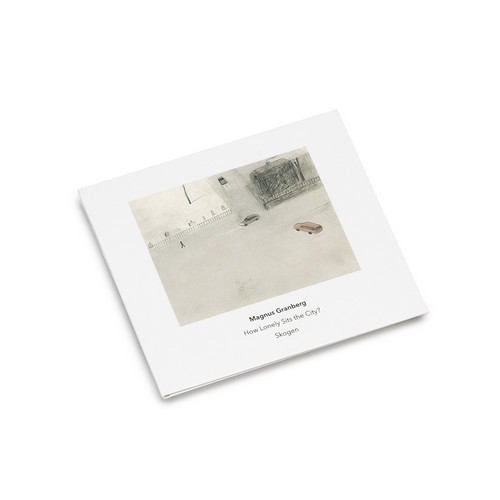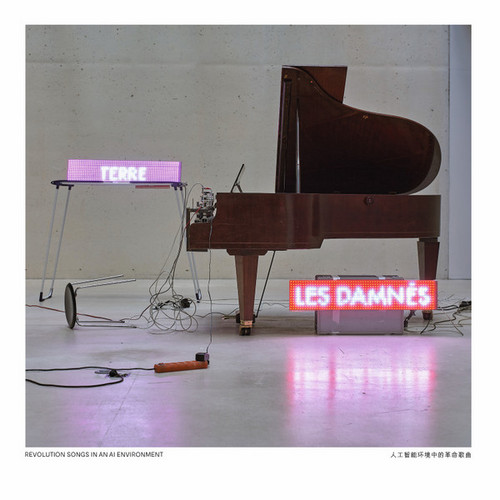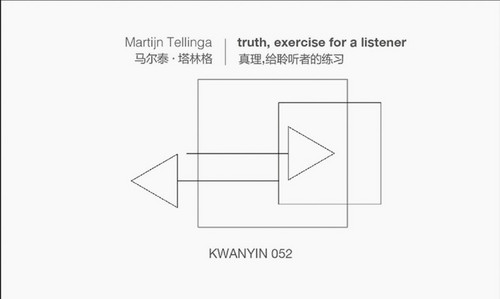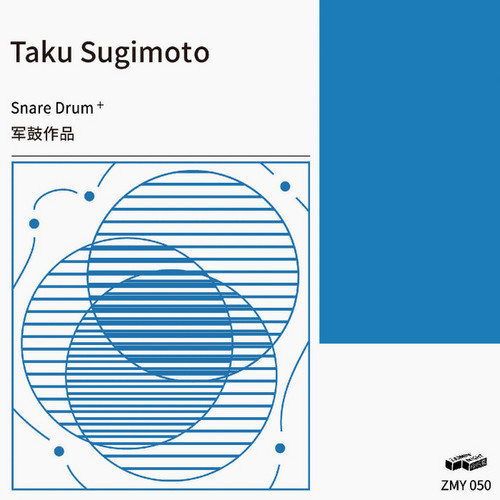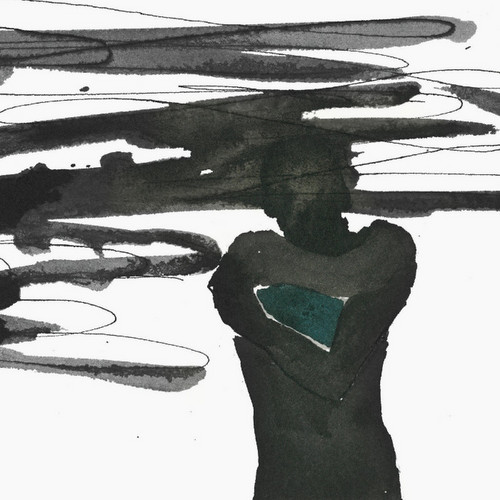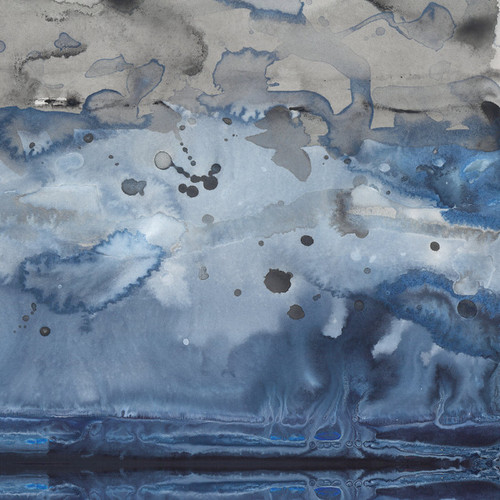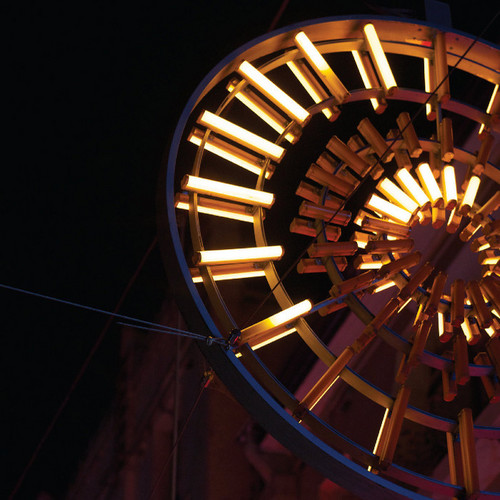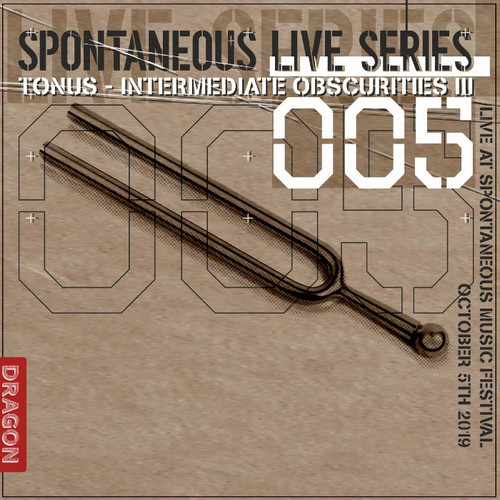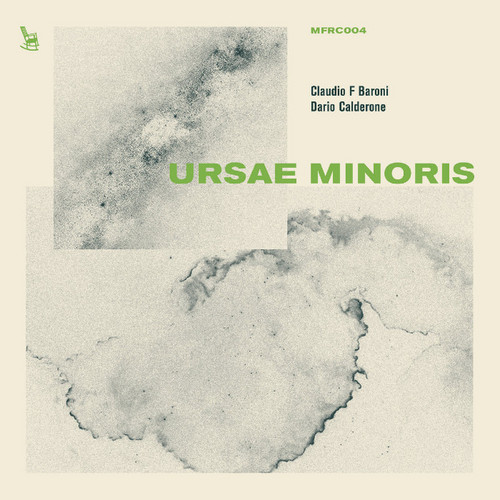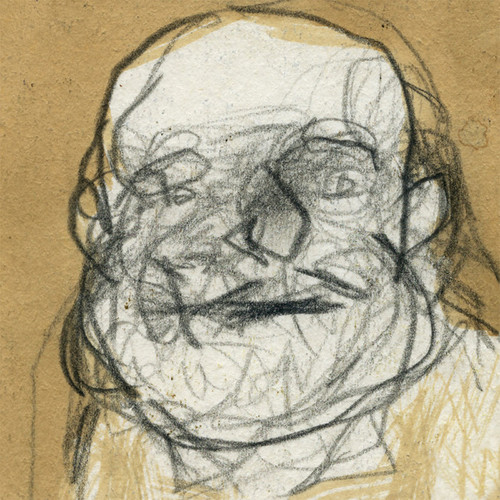How Lonely Sits The City?
How Lonely Sits the City? by Magnus Granberg stands as a meditation on absence, fragility, and the slow unfolding of collective musical thought. Rather than foregrounding overt drama or sharp contrast, Granberg distills his process into an album-length work where every gesture feels both deliberate and spare, each silence thick with meaning. The piece finds an ensemble poised between composition and improvisation, where timbral detail, suspended harmonies, and gradual variation take precedence o…
Together on the Way
A concert-length work for pipe organ, piano and percussion, created by the composer and the GBSR Duo (Siwan Rhys and George Barton) at the recent Huddersfield Contemporary Music Festival. Wonderfully brooding music, beautifully played.
Adjacent Sound
Adjacent Sound positions Gabriel Paiuk as a composer attuned to the phenomena of perception, proximity, and the thresholds where listening itself becomes the subject. Rather than presenting a collection of isolated pieces, the album unfolds as a unified exploration into how sound delineates and dissolves boundaries - between performers, between recorded and live presence, between the material and the ephemeral. Every aspect of the release is shaped by a careful questioning of what it means to li…
Discreet Angel
Discreet Angel brings to light the uniquely understated voice of Mark Ellestad, gathering three chamber works composed between the late 1980s and early 1990s. What unifies the album is its atmosphere of meditative quiet and fragile resilience, qualities honed through Ellestad’s focus on pared-down gesture and subtle shifts in form. Rather than presenting polished showpieces, these compositions favor modesty, restraint, and an honest vulnerability - traits that resonate strongly with listeners se…
Luft.Inneres
Luft.Inneres presents an introspective and rarefied journey through the musical world of Kunsu Shim, focusing on the delicacy and subtlety that mark his approach to sound and silence. The album is shaped less by linear progression or overt contrast than by the quiet shaping of atmosphere, touch, and internal resonance. Across its span, Kunsu Shim offers music that seems to hover at the threshold of audibility, gently probing the listener’s awareness of detail, space, and the interplay between in…
The News Trilogy / Revolution Songs in an AI Environment
Nicholas Bussmann was born in 1970 and is a very diversified artist. He first made a name for himself in the real-time music scene as an improvisational instrumentalist, then he devoted himself to electronic music and now he moves quite freely between artistic styles. His works are usually highly praised and are mostly part of exhibitions or other types of total artworks.The News Triology fills the first page of this work and is thus the first part of this extraordinary project released on vinyl…
Truth, Exercise For A Listener
*In process of stocking* The score for ‘Truth, exercise for a listener’ comprises a catalogue of options for a musical performer. In four parts each focusing on a different facet of our faculty to listen, it offers open ended material for the performer to deal with; sounding actions, silent actions, still actions, moving actions, interpretative actions. All can be selected, combined, omitted or extended at will. Multiple exercises can happen simultaneously. In a general sense the piece is an at…
Snare Drum +
Snare Drum + is the latest piece by legend composer/guitarist Taku Sugimoto in 2021, containing some variations of his snare drum solo piece which was written in 2011. In Snare Drum +, three or more additional performers try to follow the sound of snare drum as immediately as possible with percussion instruments or objects which decay quickly, while walking around the snare drum. In the recordings, different walking routes were used for each take.
Cycle & Song
Jack Symonds is a composer, conductor, pianist & the Artistic Director of Sydney Chamber Opera. SCO is a resident company at Carriagworks, Australia’s answer to The Park Avenue Amoury. His productions are always daring, both musically & theatrically. They tend to garner 5-star reviews and affronted walkouts in equal measure. He studied composition at the Royal College of Music, London & the Sydney Conservatorium of Music, where he received the university medal. He has written pieces for Jane She…
Not Music Yet - for solo piano
Zubin Kanga is a modern day David Tudor. He is at the forefront of 21st century avant-garde piano music, not only as a performer but also as a prolific commissioner of new works. Zubin has collaborated with many of the world’s leading composers including Steve Reich, Beat Furrer, Thomas Ades & Michael Finnissy. His teacher & mentor Rolf Hind was a pianist signed to the infamous Factory Records (Joy Division, Cabaret Voltaire) who instilled a borderless view of ‘classical’ music in him. Zubin has…
Seven Stations
Andrew Batt-Rawden is a Sydney based composer, performer & publisher. His practice is cross-platform & all-embracing. Though initially stemming from an almost traditional sense of ‘the composer’, Andrew fuses elements of gesture, choreography, new technology, text, performance art & mixed-media into his work & has a wide-ranging history of inter-disciplinary collaboration. His current focus is on incorporating all the senses into the audience experience by integrating data feeds to affect live e…
Complete Electronic & Phonetic Works 1968-1974
Reinhold Weber, born in 1927, was known as
a pioneer of electronic music.
In his compositions, Weber placed a focus on
twelve-tone music, he became increasingly
fascinated in the field of computer music since the 1970s. He produced numerous works at the Studio for Electronic Music at the University of Karlsruhe.
À La Recherche Du Temps Perdu
Perennially bewildering polymath Akira Rabelais unveils the most impressive durational work of his career thus far with a 4 hour smudge of classical works by the musical zeitgeist of the late 19th and early 20th century Belle Époque. It’s a highly enigmatic erosion x sublimation of the familiar in a way that’s by now etched into modern canon thanks to works by The Caretaker, but Rabelais has been weaving his own uncanny shroud of infidelity over our collective memory for over two decades now, wi…
Intermediate Obscurities III (Live At Spontaneous Music Festival October 5th 2019)
**200 copies limited edition** Live recording from Dirk Serries’ Tonus project, which explores long-form, minimal, graphic score pieces.
Decibel
Temporary Super Offer! Cat Hope is a composer, performer, songwriter, noise artist and researcher. She is lautist, experimental bassist and artistic director of Decibel new music ensemble, which led to her being awarded the Australian APRA|AMC Award for Excellence in Experimental Music. Decibel are a new music ensemble that focus on the integration of acoustic and electronic instruments in chamber music performance, founded in Western Australia in 2009. They are world leading interpreters of gra…
Roto Vidblomma
Roto Vildblomma, a re-worked, re-mixed and re-mastered edition of MMMΔ’s first ever recording is now available on vinyl by Improved Sequence. Roto Vildblomma marked the beginning of MMMΔ’s (still ongoing) quest to tame the beast of melody grafted intermodulations.
It was first released in May 2010 under the Mohammad moniker.
String Quartet II
* 2021 Stock ** During the decades following the Second World War, all eyes shifted toward New York, a city which, at that moment, played host to some of brightest creative minds of the century. Innovations were abound. Visual artists, writers, thinkers, musicians, and composers continuously pushed into previously unthinking ground. While the United States had been previously known to give birth to a wild and distinct breed of composer, from Charles Ives to Nancarrow, Harry Partch, Cowell, and b…
Ursae Minoris
**300 copies limited edition** "Ursae Minoris, meaning ‘of Ursa Minor’, is the title of this work because in this album we encounter this constellation not as a singular instance but as an evolution of multiple perspectives to ruminate upon. As our view of the stars changes with time and place, the three movements of this piece each offer a different aural interpretation. While working on his string quartet Perpetuo Motum, Baroni happened upon the diaries of Ciriaco d’Ancona (1391-1455), an Ita…
Dimanche | Masques | Cartoon Circus
**150 copies limited edition** "Although he had accepted my request for an interview about his practice as a rhythmist, Fernand Schirren observed me with a more interrogative look than my questions could ever warrant. From the outset, he warned me that he preferred to be called ‘Schirren’ without the addition of his first name, which he despised. It is of course a contraction of Ferdinand, the name of his father, a painter, but we did not discuss the reasons for his aversion any further. On the …
Occam Ocean Vol. 4
Eliane Radigue returns with 'Occam Ocean 4', her fourth installment of the incredible, evolving work that she began in 2011. Issued by Shiin Records as a beautifully produced CD, featuring the three leading lights of contemporary experimental music - Bertrand Gauguet, Yannick Guédon and Carol Robinson - all of whom worked closely with the composer in its development, each of its works soar to remarkable heights and quietly redefine the boundaries of drone and minimal music in ways that only Rad…
